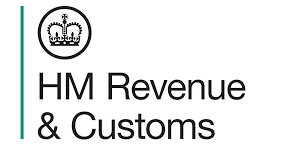HMRC SDLT: Section 75A Finance Act 2003 Guidance Archived and Replaced
Section 75A Finance Act 2003 Overview
This page provided information on Section 75A of the Finance Act 2003, which has now been archived and replaced by new guidance. The section dealt with specific tax provisions and regulations.
- Page related to Section 75A of the Finance Act 2003.
- Content has been archived and replaced by updated guidance.
- Focused on tax provisions and regulations.
“`

Read the original guidance here:
HMRC SDLT: Section 75A Finance Act 2003 Guidance Archived and Replaced
Understanding Section 75A of the Finance Act 2003
This article explains the key parts of Section 75A of the Finance Act 2003, often referred to in relation to Stamp Duty Land Tax (SDLT). This section outlines certain important rules regarding how SDLT applies to property transactions in the UK.
What is Section 75A?
Section 75A details specific provisions about transactions involving land, particularly concerning SDLT. The main aim of this section is to clarify how SDLT should be calculated in specific scenarios, ensuring that the tax is fairly charged on property transfers.
Key Principles of Section 75A
- Calculation of SDLT: Section 75A determines what amounts should be considered when calculating SDLT for certain transactions.
- Related Transactions: The section applies when there are linked or associated transactions, ensuring SDLT is applied consistently.
- Anti-avoidance Measures: These rules are designed to prevent people from sidestepping SDLT through artificial arrangements.
Relevant Transactions
Understanding the types of transactions that come under Section 75A is essential. Here are some key examples:
- Acquisition of Land: When a party buys a piece of land, SDLT tax is typically applicable. Section 75A ensures that any related transactions are included in the SDLT calculation.
- Lease Arrangements: If a property is leased and involves payments, Section 75A specifies how these payments should be factored into SDLT calculations.
- Gifts of Property: If property is given as a gift but still represents an economic value, Section 75A ensures that SDLT is due based on that value.
Calculation Methods Under Section 75A
The approach to calculating SDLT under Section 75A can involve different methods depending on the nature of the transaction. Here are the main calculation methods:
- Market Value Consideration: In cases where property is transferred without a typical sale, the SDLT is calculated based on what the property would be worth on the market.
- Actual Consideration: For standard transactions where cash is exchanged, the SDLT is based on the actual amount paid for the property.
Related Party Transactions
When transactions involve related parties, Section 75A outlines specific considerations:
- Connected Persons: This includes family members or companies that are associated with each other. The presence of these connections means the SDLT may need to be assessed differently.
- Determining Fair Value: If a property is bought from a relative at a lower price than its market value, the taxable value for SDLT purposes will be based on the market value, not the lower purchase price.
Examples to Illustrate Section 75A
To clarify the application of Section 75A, consider these examples:
Example 1: Purchase of Property
John buys a house from his parents for £200,000. The market value of the house is £250,000.
- In this case, even though John paid £200,000, the SDLT will be calculated based on the market value of £250,000, according to Section 75A.
Example 2: Lease with Consideration
Susan enters into a lease with an annual payment of £30,000. The property is valued at £600,000.
- For SDLT purposes, the calculation will look at the overall value including the total of the lease payments over the full term. The structure of payments will help determine the total SDLT amount due.
Anti-Avoidance Provisions
Section 75A includes measures to prevent tax avoidance in transactions. Key points include:
- Substance Over Form: HMRC looks at the actual substance of the transaction rather than just the paperwork. If a transaction looks like it was done to avoid paying tax, HMRC may reclassify it.
- Misleading Agreements: If a sale agreement is made with terms that seem only aimed at reducing SDLT, such arrangements can be challenged by HMRC.
Filing and Reporting Requirements
Property transactions that involve SDLT under Section 75A must be reported accurately. Important points include:
- Submission of SDLT Returns: The necessary SDLT return must be submitted within 14 days of the transaction, including the correct calculation of tax based on SDLT guidelines.
- Documentation: Proper documentation must be kept on file to prove the details of transactions, such as purchase prices and transaction relationships.
Common Questions About Section 75A
Here are some frequently asked questions related to the topic:
Is there SDLT on a gift of property?
Yes, SDLT can apply to gifts of property if they have a market value. This amount is what will be considered when calculating the SDLT.
Are there exemptions from SDLT for related transactions?
In some cases, exemptions may apply, particularly when properties are exchanged under certain family circumstances, but this requires careful examination of each situation.
What should I do if I disagree with HMRC’s SDLT calculation?
If you disagree with an SDLT calculation made by HMRC, follow the formal dispute procedures to resolve the issue.
Final Considerations
Understanding Section 75A’s provisions is critical in navigating property transactions and their associated taxes. Ensuring accurate reporting and adherence to the rules laid out by HMRC will help avoid complications, especially in more complex transactions involving connected persons or varied arrangements.







